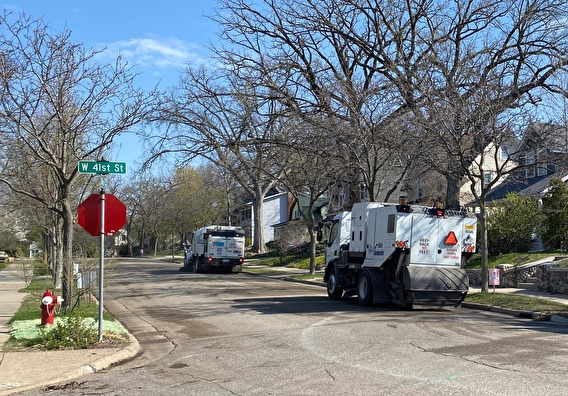
A U of M study determined that the leaves, flowers, and seeds dropped by trees in urban areas are a big polluter of stormwater. Researchers recommend street sweeping as one way to address this issue—and they provide guidance on how to effectively time and target sweeping efforts.
Excess nutrients—particularly phosphorus and nitrogen—cause major problems for stormwater systems and downstream bodies of water by feeding harmful algal blooms, damaging aquatic ecosystems, and polluting water supplies.
In a 2023 study published in Science of the Total Environment, researchers determined that coarse organic litter from trees adjacent to roadways contributes significantly to nutrient pollution in urban stormwater systems. The team was led by Distinguished McKnight University Professor Sarah Hobbie of the U's Department of Ecology, Evolution and Behavior.
The researchers studied four municipalities in the Twin Cities metro area over the spring, summer, and fall of 2019. They also studied the City of Prior Lake, Minnesota, for two years. At each location, the researchers measured factors such as tree canopy cover over streets by season and compared these factors to how much nitrogen and phosphorus was recovered from local street sweepings. They also compared nutrients recovered from coarse organic materials compared to fine sediment.
The results support the idea that tree litter is a big contributor to nutrients entering stormwater. Nutrient loads from street sweepings were generally much higher during seasons when trees were dropping more coarse materials (spring, early summer, and autumn). Nutrient loads also tended to be higher when there was more canopy coverage over streets.
From these results, the researchers recommend street-sweeping as a cost-effective means of reducing nutrient pollution. The researchers advise timing sweeps to coincide with peak litterfall and targeting areas that have high canopy coverage.
Street sweeping also has the added benefit of reducing maintenance needs for stormwater management structures such as ponds and catch basin sumps.
The researchers anticipate that their findings will hold true for other urban areas in the Midwest, and they recommend counting street sweeping toward pollution-reduction credit systems such as the Municipal Separate Storm Sewer System (MS4) permit. Based on the research, the Minnesota Pollution Control Agency developed a calculator for municipalities in Minnesota to determine credits for phosphorus removal through street sweeping.
The project was supported by the U of M Water Resources Center with money from the Clean Water Fund.
—Sophie Koch, contributing writer